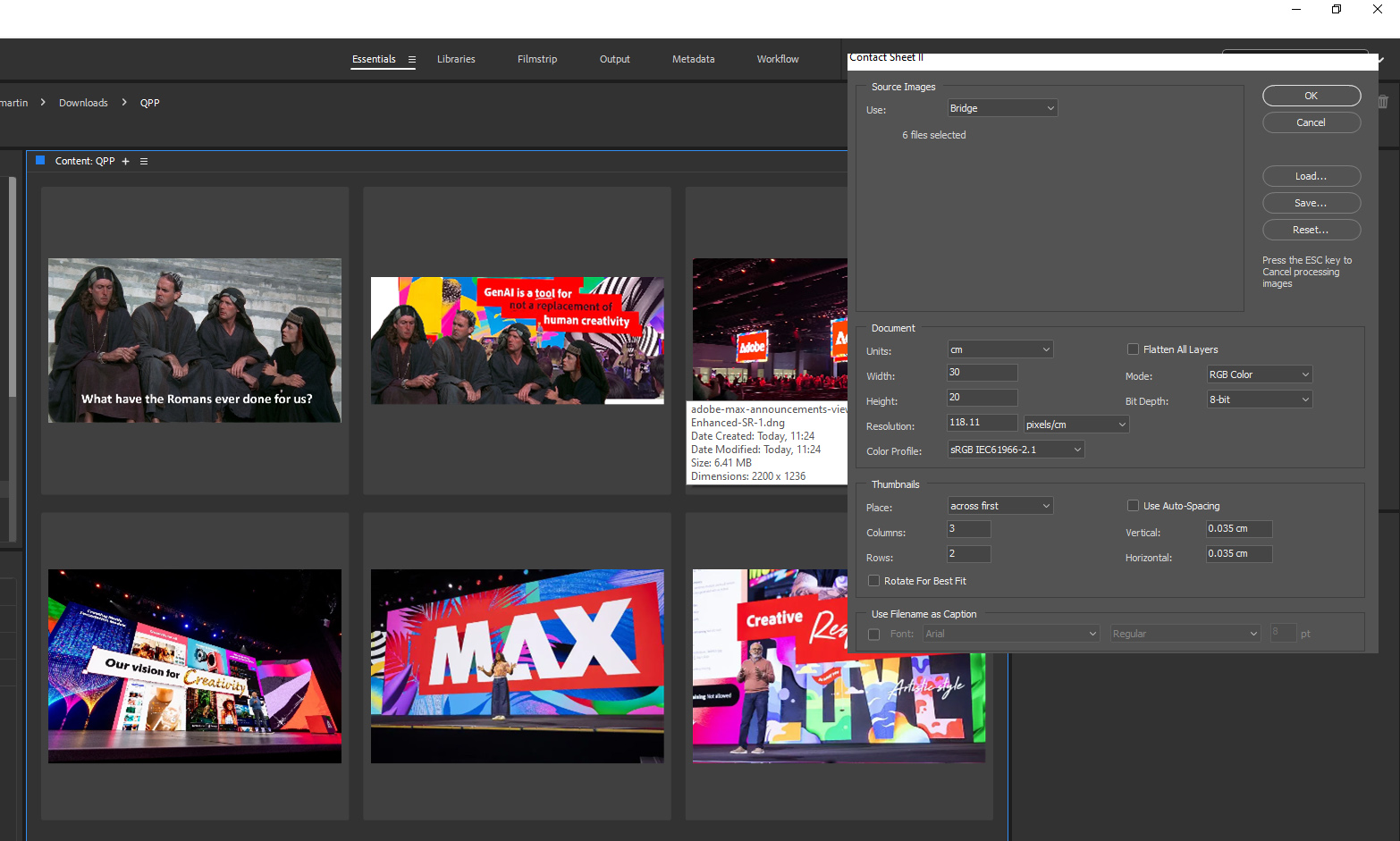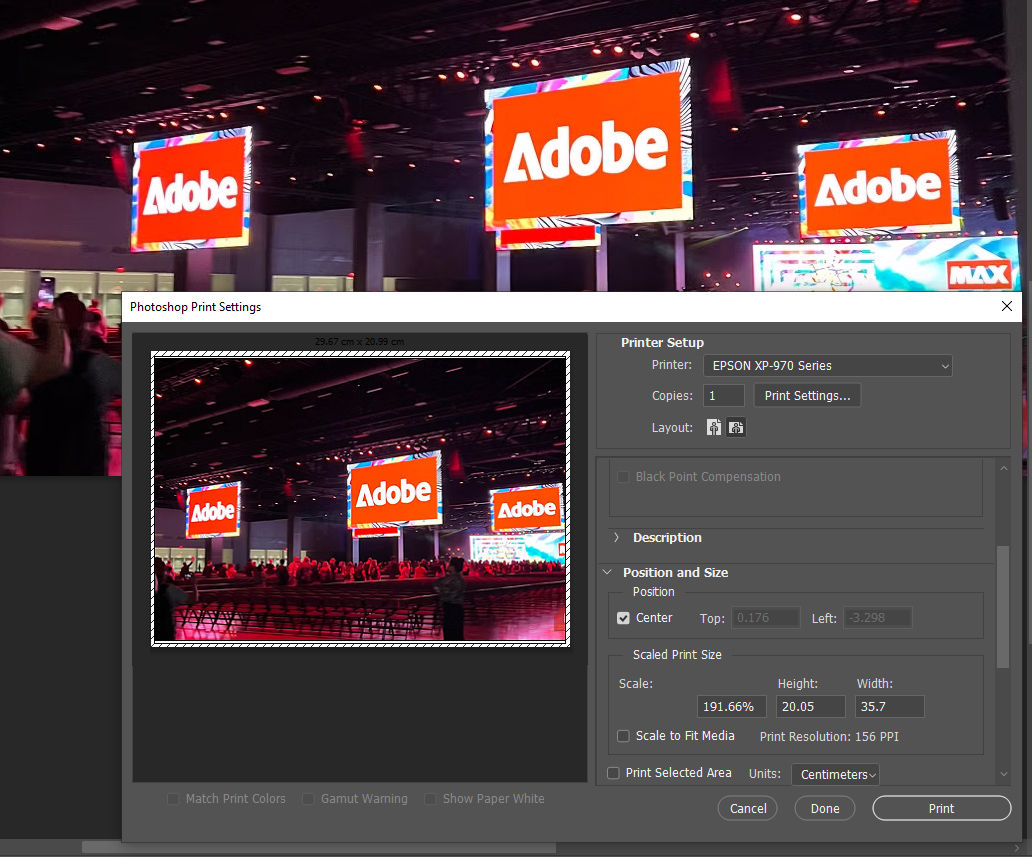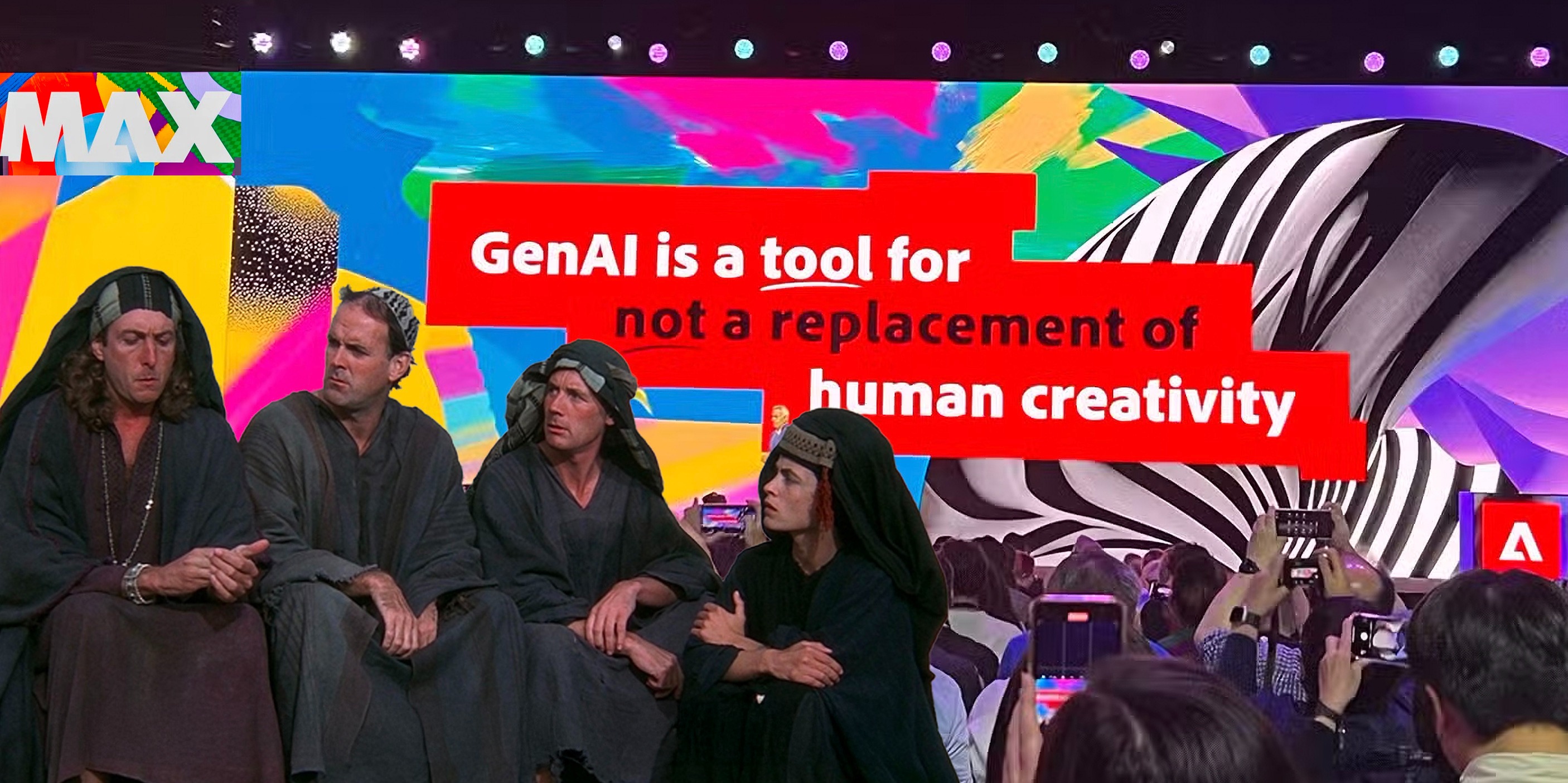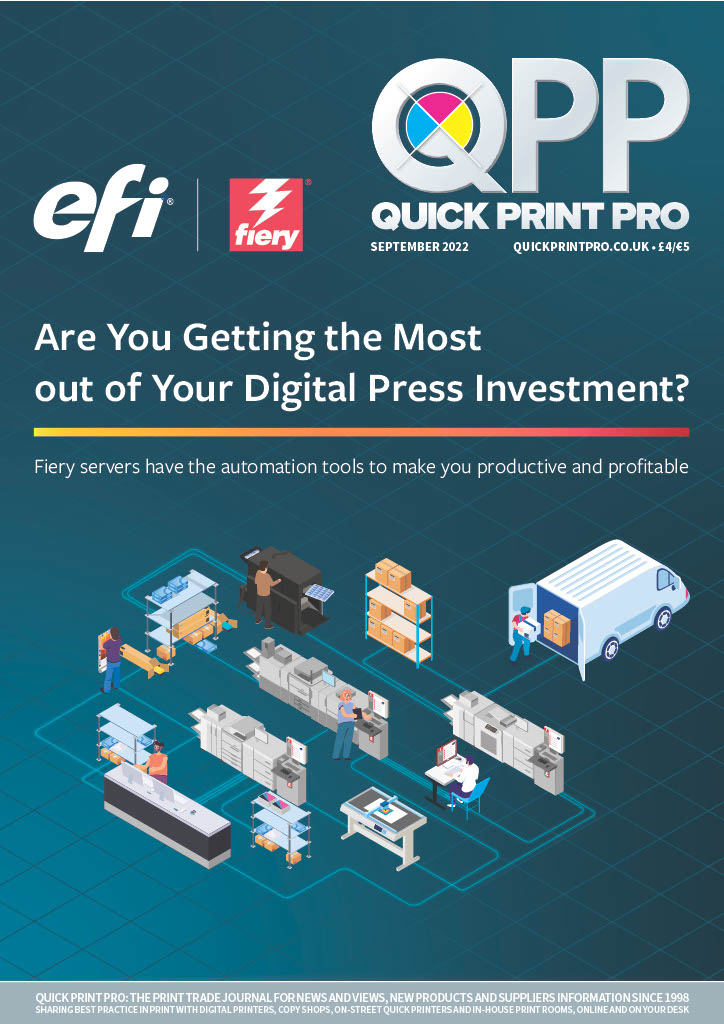Back in the July issue I raised some of the issues that were boiling over on the worldwide web regarding users who were abandoning Adobe and its subscription service in favour of one or other of the alternatives available. Much of the controversy surrounded the use of creatives images shared online to enhance the Artificial Intelligence learning banks, and the fact that benefits were seen to be very much one-sided.
To be fair to Adobe they had taken the stance that they would use their own resource of contributors rather than other companies that were rapidly gaining strength in the marketplace by simply plundering anything they could find on the internet under the assumption that it was free to exploit. That’s of course like most of our customers, except that these companies are building an empire and making a fortune with a resource they have not created and do not deserve, rather just doing a bit of one off design for a card or a t-shirt.
More recently my opinions have been prompted by a fellow photographer whose thoughtful blog had some pertinent points. Like me, he has had over twenty years of loyal following of Photoshop, including articles and tutorials extolling the benefits of all the developing features, and his argument struck a chord. It’s perhaps time to ask whether the balance of cost benefit has swung too far in the wrong direction, and whether it is time to call Adobe to account, after all we are the customers who made the company very rich and powerful.
It began, in the early days of digital, towards the end of the last century to be exact, when to be honest, hardly anyone knew what it was all about - much like AI today. There were lots of competing software start-ups but only a few could survive and prosper and Adobe made a very clever move to seize the high ground by providing a basic version of Photoshop to any quality camera, scanner or printer, as well as subsidised plans to schools and colleges so that users would be familiar with the product as a go-to application. Hence Photoshop became, in effect, a generic title, for any digital editing regardless of how it was achieved.
Back then, however, the software came on a disc - which for younger readers is a thin round silver thing which older computers may be able to read if it’s not too scratched. Of course this gave the opportunity for Captain Jack Sparrow and his pals to copy and pirate the software with no financial benefit to Adobe. There were new updates that could be purchased, if you wanted to, but at least you had the benefit of checking the specifications to see whether they were worth it.

The move to on-line subscription closed this option and was obviously a great advantage to Adobe, but there were also advantages to the user, particularly with fixes to the inevitable bugs that emerged as software became more sophisticated. These were found more promptly because of the immediate feedback with customers, but there was also a benefit to subscribers in the development of future updates with the continuous online conversation. It is the latter that has become more contentious as the balance of power in what Adobe loves to call the ‘creative democracy’ has swung very much too far in the company’s favour.
Cui bono is the often quoted Latin legal phrase to establish who actually benefits the most from a situation, or to paraphrase John Cleese in his biblical revolutionary role in the Life of Brian, ‘what have they ever done for us?’
Well to be fair, yes the most powerful and comprehensive photo editing and cataloguing package available if you include the trinity of Photoshop, Lightroom and Bridge. Speaking as a photographer who uses them seven days a week, life would be more difficult without them. But in my role as a printer, needing them only to service customer files on demand, I am rather more circumspect. Much of that comes down to the cost benefit equation. My personal photography plan only costs me £9.98 a month, and I can live for that or cut a pint or two out of my busy social life.
If you have the whole Creative Cloud suite however, the cost is five times that - every month, on every computer - and has been for however long you have been subscribed, which could be over ten years. And if you have tried changing your plan or pulling out of it altogether you will have found it rather complicated. That’s why Adobe’s lock-in, like many online signup schemes, is getting into hot water with the US government and others.
But my discussion is not about monopoly or the misuse of intellectual property. It is simply to ask whether you are still getting the value out of an Adobe subscription that you used to.

October saw the annual bun fight that is Adobe Max where the company showcases a raft of new features across the board, and previews tasters of things to come. It’s all hyped up with glitz and glamorous presentations to wow the audience, but in reality the substance is rather underwhelming. Like last year’s offering, I’d rather decide for myself what I find exciting than be blinded by the glitter and not notice that the Emperor isn’t actually wearing many new clothes.
The substance is more of the same - more artificial intelligence dressed to look like major improvements. For example, we have the ‘remove distraction’ tool which is basically a development for the already excellent remove tool - but now it’s the Gen AI deciding what needs removing. It’s all part of the push one button fix all world which according to Adobe, or at least those in charge of its direction of travel, does not require any technical skill or experience.
When you think about it this is a statement that is disingenuous and outrageous in equal measure. It is the bland statement of marketing people who know the price of everything and the value of nothing, dismissing all of the creative talent that has been ploughed into digital image editing over the last couple of decades, let alone filled the companies coffers.
Of course Adobe has been forced into this novelty arms race by the competition of precocious start-ups snapping at its heels. But that’s not a valid reason to almost entirely neglect the core elements that have been the building blocks of the company's success, or the customers who have paid for it.
In the print industry we may be a small number among the many millions who are part of the Adobe community, but I think we are a significant part considering our continuing role in the dissemination of information. We produce something that is real, and needs human intelligence to fashion it.
It used to be said that newspapers were today’s reality but tomorrow’s chip wrappers. But things created in the cloud are potentially even more transient.
So as part of that Adobe journey from its early beginnings it is surely time for us to be heard as much as the seductive sirens of social media. I’m not calling, as others are doing in that atmosphere, for a boycott of Adobe, but more a collective appeal not to be ignored.
The issue, as a long term user, is that all of the individual programmes that comprise the Adobe stable have become more complicated in order to provide more solutions to an increasing number of tasks. This inevitably makes them less user friendly to anyone new to them, or time consuming for any comprehensive training programme. So you can understand the temptation to provide short cuts with the help of AI that avoid a lengthy and sometimes frustrating learning curve.
But unfortunately there is no real substitute for actually knowing how things work. Not if you want to provide a professional service, and moreover learn from the very human task of problem solving that has done evolution of the species pretty well for many generations. In the process there’s always a chance you might find a solution Adobe is missing.
Personally, receiving updates I didn’t ask for or really need, has encouraged me to think of things I would wish for. I know you have the option not to automate this process but there’s always the suggestion of an important glitch fix amongst the goodies and you don’t have the option to pick and mix.
Take the print dialogue box for example which obviously is important to us but presumably not to Adobe as it hasn’t really changed since the turn of the century. Why is it not more intuitive given that the computer talks to the printer, and we have to check and make adjustments in both, which is not only time consuming but increases the chance of errors? I’d sooner see big improvements in that interface that would ease the stress in my working day rather than a tool that can save a couple of seconds taking out a stray telephone cable.
Then there is the much neglected Bridge which I’ve always been a fan of and which Adobe all but abandoned some years ago. If you are dealing with lots of files daily, as we do, you need a much better way of filing, searching and saving which surely AI should be able to provide given that it has instant access to all the metadata in a digital file. If you think about it, manually sorting files in folders or colour coding them is almost antique.
Lightroom has a more automated system for collecting files but it is a dated labyrinth and you don’t dare move anything or you will never find it again - or at least the software won’t.
Bridge does have a partly useful Output option that can turn files into multi page PDFs for example, and that can be really useful going on to print but this could be much improved by current techniques. There should be many more layout possibilities but the choices are limited, presumably because Adobe would rather you buy and use Indesign for things like that.
There is potentially a very powerful layout tool in Photoshop, but once again that has received no attention in years. In fact Adobe removed the Contact Sheet from one previous version as they didn’t think it was important. It’s a throwback to day room days when you could place directly negatives on one sheet to compare exposure and colour or chose the best of a bunch. But it could be a perfect pixel based template with more simplified control of margins, as well as enabling the fine adjustment of any of the single images in the package.
I rely on Lightroom for my personal image editing as the develop and masking abilities are streets ahead of any other programme but the print dialogue is ten years out of date and is as clumsy as trying to use a spoon as a screwdriver.
For all of the good things, there are many that need more attention than AI gimmicks but if that is the path Adobe chooses they may stay neglected. As I always stress, other software is available, so for next month I’m going to save you time to see if there are any realistic alternatives for print on demand. Watch this space.





-2022-10-17-17-37-37.jpg)

